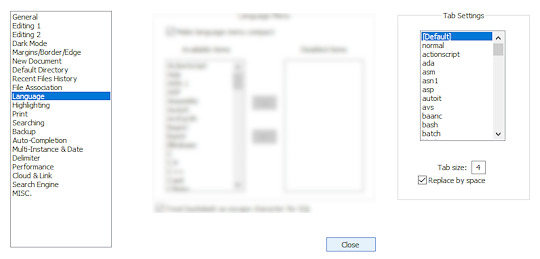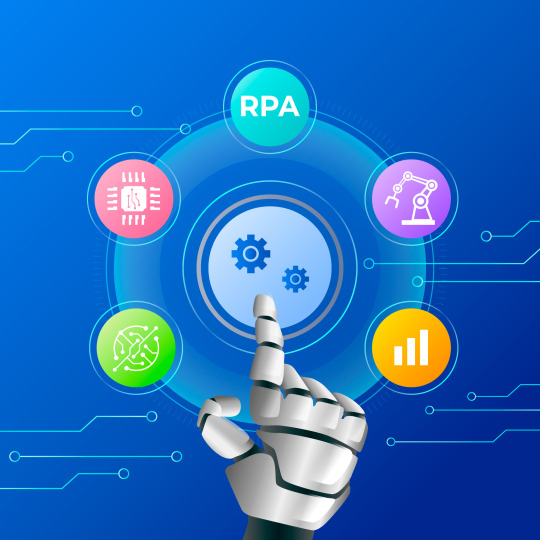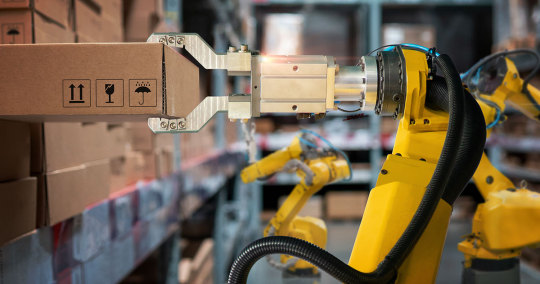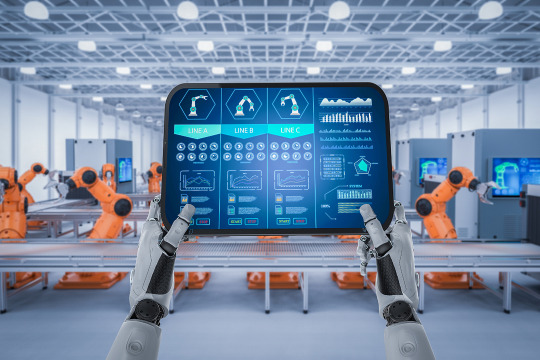#rpa order processing
Explore tagged Tumblr posts
Text
Top Benefits of Order Processing Automation with RPA

Uncover the significant advantages of using RPA for order processing, including improved speed, accuracy, and cost savings. Discover why businesses are making the switch to automated solutions.
0 notes
Text
Our Life Modding Guide
For anyone wanting to know how to either look into the game files themselves or write in their own scenes, here it is!
(Real quick, here's a link to GB Patch's opinion on modding - which is that we're free to do so - just in case anyone may be concerned about that; here's another as well.)
Preparation
I'm going to say right up front that I have the itch.io Windows version of Our Life, so your methods may vary on anything else. The Steam version is the exact same to my knowledge, however, so this should work exactly the same for it (I've had people who use the Steam version test mine for me).
While this may go without saying, definitely back up your game before anything else, both as a precaution and also to keep the original around (whether for comparison's sake, you might want to still play the original, or in case something goes wrong and you need to reinsert any of the original files). I usually keep the modded version's folder somewhere away from the original, but that's just me. You can also just make sure to mark it.

Unpacking Our Life's Files
One peek into the "game" folder of Our Life will reveal... well, not much. Some icon files, a couple images, two folders for your save files and cache, and little else. This is because everything else is packed into the .rpa files and we need to open them up. Think of it like a safe that we need to unlock, or luggage that we need to unzip.
Depending on how many DLCs you have (the only one I don't have is Voiced Names, which would be dlc_voiced_names.rpa), the amount of .rpa files will be any/all of these:

There are a few different ways to unpack these and I'll be listing multiple on the off chance that the others don't work (ordered by ease of use/overall usefulness).
RPA Extract (by iwanplays)
This is the easiest method out of all and the first I recommend you try. You can find it here.
It's a single .exe file and all you have to do is drop it into the "game" folder of Our Life, select all of the .rpa files, and drag them onto the .exe.

This will open a Command Prompt that will extract all of the files for you, and you can delete the rpaExtract.exe after it's done. Simple as that.
RPA Explorer (by UniverseDevel)
This one is useful if you only want to look at the files and not extract/edit them, though it can do that too. You can find it here. The disadvantage from RPA Extract is that you'll have to extract the .rpa files one at a time instead of all at once.
After downloading, open the program and click on "Load File" in the upper-left.

Locate your .rpa files and open one. You'll see folders and files pop up, showing you all the files inside of the .rpa file you chose. You're free to look at any of them as you please, but if you want to extract them, check the box next to the "/" folder to select everything and then click "Export checked" in the upper-left.

Locate the "game" folder in the Our Life folder that you want to mod, click on it, then click "OK".

A progress bar will appear in the lower-right and the files will be extracted. Repeat this process for the remaining .rpa files.
rpaextract (by Kaskadee)
This method is a little more complicated and therefore requires some more steps. You can find it here (you can simply download the portable version).
Rather than in the case of RPA Extract, you'll want to take the .rpa files out of Our Life's game folder and put them in the folder of whichever you downloaded. This will just make it easier in the long run.

Once everything is moved, right-click on the address above for the folder, click "Edit Address," and type "cmd" at the beginning before tapping Enter.


A Command Prompt will open with the name of the folder. You'll have to extract your .rpa files one at a time here.
You'll then type out (without the brackets):
rpaextract -x -f [filename].rpa -o game

The .rpa files will be extracted (as shown above, it will give you a loading bar to show progress then pop up the address for you to type something out again when it's done) and appear in a folder titled "game." You can then copy that folder and paste it over Our Life's game folder, combining the contents of both together.
Testing
Now that you have your files extracted, you can delete the .rpa files that you had extracted from because we don't need them anymore. The "game" folder of Our Life should look something like this:

You should also still be able to open the .exe of Our Life and load to the main menu without experiencing any error messages. Tapping on "DLC Info" in the upper-left of the main menu should also still have all the DLCs you had listed as "Installed."

If all that checks out, you're good to continue!
Setting Up Your Text Editor
You'll need a text editor for this and, for size's sake, I'm going to recommend Notepad++, which you can find here. You can just download the portable version but it doesn't really matter.
Once it's been opened, we're going to do a few steps to make it recognize Our Life's script (.rpy) files (the ones you'll be tampering with if you want to add scenes/change dialog/etc.).
Go into the "Settings" tab at the top, then click "Style Configurator".

2. Scroll through the "Language" section until you find "Python". Click on that.
3. Under "User ext. :" at the bottom, type "rpy" without quotations.
4. Hit "Save & Close".

5. Go to "Settings" again, then click "Preferences".

6. Find "Language" on the left of the window that pops up and click on that.
7. Look for "Tab Settings" on the right. It should be set to "Default", the "Tab size" should be "4", and you should checkmark the "Replace by space" box. You can then hit "Close".

(an important part of the code is indenting and this just streamlines it so that when you push "Tab" it will insert four spaces instead)
8. Go back to the Our Life "game" folder, then find an .rpy file (any will do), right-click it, then hit "Open with…"

9. Check the "Always use this app to open .rpy files" box.
10. Click on "Notepad++". If it's not there right away, hit "More apps", and if it's still not there then scroll all the way down and hit "Look for another app on this PC" and find+confirm the Notepad++.exe.

Now Notepad++ will automatically open any .rpy file that you double-click on and will treat them appropriately.
And now you're ready to go! The .rpy files are actually Our Life's script files, which can be freely opened in Notepad++ (or another text editor) to edit the game's scenes or add your own.
Happy modding!
28 notes
·
View notes
Text
Why Should Organizations Choose RPA Managed Services Over In-House Automation?
In the current business world, time is a very valuable resource, and the work flow depends on efficiency. Automation, especially through Robotics Process Automation, has proven to become more functional in enabling a reduction of excessive human interventions. Even if it is wise to develop an in-house automation team, there are key benefits associated with managed RPA services that explain why organizations should seek the help of the latter.

Here's why more and more organizations are choosing external expertise for their RPA needs:
Faster Implementation and Time-to-Value: Developing an effective Centre of Excellence for RPA services demands a substantial amount of time, and a lot of effort goes into recruitment activities, training, and infrastructure development. The implementation of IT management services is more efficient with MSPs as they already have the knowledge and tools in place, so it is faster to gain a return on investment. According to data gathered from numerous industries, first-order automation gains through engaging managed services run approximately 40% better than those achieved by setting up in-house centers of excellence.
Access to Specialized Skills and Experience: Today RPA services is a rapidly developing industry. Managed service providers employ teams of certified professionals with diverse experience across various industries and RPA service platforms. They also provide access to best practice ideas, new and improved techniques, and niche solutions for particular types of business, aspects which cannot easily or inexpensively be duplicated in-house. Data collected using the current survey shows that 65% of the companies are outsourcing RPA with a primary motivation to access specialized skills.
Cost Efficiency and Predictable Expenses: On the other hand, although in-house automation becomes cheaper in the long run, the upfront cost of personnel hiring and training, software purchase, and maintenance is considerably high and variable. Managed services are given on a subscription basis, and this factor eliminates the element of uncertainty, resulting in lower costs. Researches also indicate that outsourcing of RPA services may make the costs to be decreased by about 30% lower than if it was to be done internally.
Scalability and Flexibility: Business needs fluctuate. Managed RPA services permit the demand for capacity for automation to be adjusted according to the requirements, and is not restricted just like the hiring of employees or purchasing more equipment that is required for permanent automation services. This is important for meeting the ever-changing market needs and the growth of the business. There is information that organizations cooperating with managed services enjoy 25% more freedom in scaling up their automation processes.
Focus on Core Business Activities: Outsourcing an RPA project creates the need for an in-house in-IT team to run and maintain the project away from its core business functions. For this reason, when one hires the services of an MSP, internal teams are relieved of handling tasks that can otherwise be tedious and time-consuming, leaving them time to work on more pressing issues for the organization, such as business development. In another view, outsourcing of RPA, like other non-core businesses, can enhance organizational focus by about 50%.
Continuous Support and Maintenance: However, for the RPA application to gain an adequate amount of functionality, it has to be monitored, maintained, and updated over time. Another benefit of MSP is availability of workforce support on such tasks as this relieves internal IT and the business. However, the total availability of RPA services can be enhanced to the optimum level as some of RPA services providers have an availability of 99.9% in some cases.
Selecting the right partner is, therefore, essential when engaging in RPA services. Different organizations that provide RPA services are Accenture, Tata Consultancy Services (TCS), Suma Soft, Infosys, and Wipro. Assessing the competence, the years of experience and services they offered will assist before choosing the appropriate service provider that will meet the needs of your organization for the future automation plans.
2 notes
·
View notes
Text
5 ways RPA can streamline your business operations

Robotic Process Automation (RPA) is a technology that has been gaining traction in recent years. It is a software that can be programmed to carry out tasks in a software interface that would normally be done by a human. RPA is usually used in instances where a task is repetitive, but vital to operations, such as collecting data from various siloed spreadsheets. This doesn’t just reduce the employee workload, it also reduces the risk of human error, improves accuracy, and can even help businesses ensure that they are compliant with data privacy regulations.
Here are 5 ways RPA can streamline your business operations:
Data mining
RPA can help extract useful data from your company’s vast data storage silos and use them to paint detailed, accurate pictures of customer behavior, product usage, employee engagement, sales figures across different regions, and pretty much anything that is measured using digital datasets. Business transformation RPA is really the only viable way of conducting data mining, as manually trawling through spreadsheets is impossibly slow and has a high chance of fatigue-induced error for humans.
Invoice processing
Invoice processing is one of many important tasks that finance departments undertake. An accidentally added zero could cause mayhem for your organization. Business transformation RPA removes the chance of human error entirely and relieves finance employees from the rote task of editing, checking, and sending invoices. By setting up an RPA bot to match customers and orders and automatically draw up invoices, businesses can save time, increase accuracy, and avoid possible disasters.
Employee onboarding
Automation isn’t reserved only for data mining and finance tasks. It can also have an impact on the human side of a business too. HR departments across the world use automation to help manage crucial areas of the business – an example of this can be found at the beginning of the employee journey. The onboarding process usually consists of background checks, collecting payslip information, references, and more. RPA can help automate these tasks, freeing up HR personnel to focus on more important tasks.
Customer service
RPA can help businesses automate their customer service processes, such as answering frequently asked questions, handling customer complaints, and more. By automating these processes, businesses can save time and money, while also improving customer satisfaction.
Supply chain management
RPA can help businesses automate their supply chain management processes, such as inventory management, order processing, and more. By automating these processes, businesses can save time and money, while also improving accuracy and efficiency.
In conclusion, RPA can help businesses streamline their operations by automating repetitive tasks, reducing the risk of human error, and improving accuracy. By implementing RPA, businesses can save time and money, while also improving customer satisfaction and employee engagement.
2 notes
·
View notes
Text
Unlocking Efficiency and Innovation: The Role of Robotic Process Automation (RPA)

In today's fast-paced and competitive business environment, organizations are constantly seeking ways to improve efficiency, reduce costs, and increase productivity. Robotic Process Automation (RPA) has emerged as a powerful tool that can help businesses achieve these objectives.
What is Robotic Process Automation (RPA)?
Robotic Process Automation (RPA) is a technology that allows businesses to automate repetitive, rule-based tasks. It uses software robots, also known as "bots," to mimic human actions and interact with digital systems. These bots can log into applications, navigate through screens, input data, and complete tasks just like humans would.
The Role of RPA in Business:
RPA can be used to automate a wide range of tasks across various industries and departments. Here are some examples:
Finance and Accounting: Automating tasks such as accounts payable and receivable, invoice processing, and financial reporting.
Customer Service: Automating tasks such as answering FAQs, resolving customer inquiries, and processing orders.
Human Resources: Automating tasks such as onboarding new employees, processing payroll, and managing benefits.
IT: Automating tasks such as provisioning accounts, managing user access, and deploying software updates.
Impact of RPA on Businesses:
Implementing RPA can offer numerous benefits to businesses, including:
Increased efficiency and productivity: RPA can automate time-consuming and tedious tasks, freeing up employees to focus on more strategic and value-added activities.
Reduced costs: RPA can help businesses save money on labor costs, as well as reduce errors and compliance risks.
Improved accuracy and compliance: RPA bots are programmed to follow specific rules and procedures, which can help to improve accuracy and compliance with regulations.
Enhanced process visibility and control: RPA provides businesses with a clear view of their processes, which can help them identify and address bottlenecks.
Improved customer satisfaction: RPA can help businesses improve customer satisfaction by automating tasks such as order processing and customer service interactions.
RPA Services:
Implementing RPA successfully requires a partner with expertise in the technology and a deep understanding of business processes. A comprehensive RPA solution should include the following services:
Document AS-IS Process: This involves mapping out the existing process to identify areas for automation.
Design & Development of Bots, workflows, and forms for process automation: This includes designing and developing the software robots that will automate the tasks.
Bot license (We will use the appropriate underlying technology): This provides access to the software robots and the underlying technology platform.
Infrastructure: This includes setting up the necessary infrastructure to support the Robotic Process Automation (RPA) solution.
Production Deployment of the Bots: This involves deploying the bots to production and monitoring their performance.
RPA support: This includes ongoing support for the RPA solution, such as troubleshooting and maintenance.
Test & Deploy bots to production: This involves testing the bots in a production environment and making any necessary adjustments before they are deployed to full production.
Configuration data changes: This involves making changes to the configuration data of the bots as needed.
Password updates: This involves updating the passwords of the bots as needed.
Errors in executing the Bots: This involves resolving errors that occur during the execution of the bots.
Determining the “root cause” of a recurring issue or incident & recommendations: This involves identifying the root cause of a recurring issue or incident and recommending solutions to prevent it from happening again.
Infrastructure/application related issues: This involves resolving issues with the infrastructure or applications that the bots are interacting with.
Conclusion:
RPA is a powerful technology that can have a significant impact on businesses of all sizes. By automating repetitive tasks, RPA can help businesses improve efficiency, reduce costs, and increase productivity. However, it is important to choose a reputable Robotic Process Automation (RPA) companies with the expertise and experience to help you implement a successful RPA solution.
Ready to embrace the power of RPA?
Contact us today to learn more about how RPA can help your business achieve its goals.
#robotic process automation#robotic process automation rpa#rpa automation#robotic process automation software#rpa software#robotic process automation companies#robotic process automation technology#robotic process automation in healthcare#robotic process automation in banking#rpa solution#robotic process automation for finance#process automation solution#robotic process automation services#robotic process automation for insurance#rpa system#what is rpa automation#robotic process automation solution#robotic process automation benefits#robotic process automation consulting#robotic process automation consultant#rpa service provider#rpa consulting services
2 notes
·
View notes
Text
Understanding the Power of SAP Robotic Automation
1. Introduction
In a world where data and processes drive businesses, sap robotic automation is a technology that stands out. It promises to transform the way enterprises operate by automating repetitive tasks, enabling employees to focus on more strategic activities.
2. What is SAP Robotic Automation?
SAP Robotic Automation, often referred to as RPA (Robotic Process Automation), is a technology that uses software robots or "bots" to automate routine and rule-based tasks within an organization. These bots mimic human actions, interact with various systems and applications, and can work around the clock without rest.
3. How Does SAP Robotic Automation Work?
SAP Robotic Automation works by employing bots to execute predefined tasks. These bots are trained to follow specific workflows, interact with user interfaces, extract and input data, and make decisions based on predefined rules. They can seamlessly integrate with existing software systems, making them highly versatile.
4. Benefits of SAP Robotic Automation
Streamlined Processes
One of the primary advantages of SAP Robotic Automation is the streamlining of processes. It allows organizations to automate repetitive tasks, reducing the time and effort required to complete them.
Reduced Errors
Humans are prone to errors, but bots are not. By automating tasks, SAP Robotic Automation significantly reduces the chances of human error, leading to higher accuracy in operations.
Enhanced Productivity
With routine tasks automated, employees can focus on more strategic and creative aspects of their roles, ultimately leading to increased productivity and job satisfaction.
5. Applications of SAP Robotic Automation
Finance and Accounting
In the finance sector, SAP Robotic Automation can automate tasks such as data entry, invoice processing, and reconciliation, allowing financial professionals to concentrate on financial analysis and strategy.
Human Resources
Automating HR tasks like employee onboarding, payroll processing, and attendance tracking frees HR teams to focus on employee engagement and talent development.
Supply Chain Management
SAP Robotic Automation can optimize supply chain processes by automating inventory management, order processing, and demand forecasting.
6. Implementing SAP Robotic Automation
Selecting the Right Processes
Not all processes are suitable for automation. Organizations should carefully choose which tasks to automate based on criteria like frequency, rule-based nature, and potential ROI.
Integration with Existing Systems
Smooth integration with existing software and systems is crucial for the success of SAP Robotic Automation projects.
Training and Development
Employees need to be trained to work alongside bots and understand how to manage and maintain automated processes.
7. Challenges and Solutions
Data Security Concerns
As bots interact with sensitive data, ensuring data security is a top priority. Implementing encryption and access controls can mitigate these concerns.
Change Management
Introducing automation can lead to resistance among employees. Effective change management strategies are essential to ensure a smooth transition.
Maintenance and Support
Regular maintenance and timely support are necessary to keep the automation ecosystem running smoothly.
8. Future Trends in SAP Robotic Automation
The future of SAP Robotic Automation holds exciting possibilities, including enhanced AI capabilities, greater integration with IoT devices, and advanced analytics for smarter decision-making.
9. Real-Life Success Stories
Explore how leading organizations have harnessed the power of SAP Robotic Automation to achieve remarkable results.
SAP Robotic Automation is a game-changer for businesses looking to boost efficiency, reduce errors, and empower their workforce. By harnessing the power of automation, organizations can stay competitive in today's rapidly evolving business landscape.
Read More : https://www.beezlabs.com/tulip
2 notes
·
View notes
Text
What are the latest warehouse automation technologies?
Gone are the days of manual labour and static, inefficient operations. Today, we stand at the forefront of a revolution driven by the latest warehouse automation technologies. These innovations reshape how businesses handle inventory, fulfil orders, and optimize supply chains.
From autonomous robots and artificial intelligence to the Internet of Things (IoT) and advanced data analytics, we'll explore how these technologies enhance efficiency, reduce costs, and ensure seamless operations in modern warehouses.
1-Robotic Process Automation (RPA): RPA involves using software robots to automate repetitive tasks like data entry, order processing, and inventory tracking. The robots interact with various systems and applications to streamline workflows.
2-Autonomous Mobile Robots (AMRs): Robotic vehicles called AMRs navigate and operate in warehouses without fixed infrastructure, such as conveyor belts or tracks. They perform tasks like picking, packing, and transporting goods.
3-Automated Guided Vehicles (AGVs): AGVs are similar to AMRs but typically follow fixed paths or routes guided by physical markers or magnetic tape. They are commonly used for material transport in warehouses and distribution centres.
4-Goods-to-Person Systems: This approach involves bringing the items to the workers rather than having workers travel throughout the warehouse to pick items. Automated systems retrieve and deliver goods to a workstation, reducing walking time and improving efficiency.
5-Automated Storage and Retrieval Systems (AS/RS): AS/RS systems use robotics to store and retrieve items from racks or shelves automatically. These systems can significantly increase storage density and optimize space utilization.
6-Collaborative Robots (Cobots): Cobots are designed to work alongside human workers. They can assist with tasks like picking, packing and sorting, enhancing efficiency and safety.
7-Warehouse Management Systems (WMS): While not a physical automation technology, modern WMS software uses advanced algorithms and AI to optimize inventory management, order fulfilment, and warehouse processes.
8-Vision Systems and Machine Learning: Computer vision technology combined with machine learning can be utilized for tasks such as object recognition, inventory movement tracking, and quality control.
9-IoT and Sensor Networks: Internet of Things (IoT) devices and sensors collect real-time data on inventory levels, environmental conditions, equipment health, and more, enabling better decision-making and predictive maintenance.
10-Voice and Wearable Technologies: Wearable devices and voice-guided picking systems can provide workers with real-time information and instructions, improving accuracy and efficiency.11-Automated Packaging Solutions: These systems automate the packaging process by selecting the appropriate box size, sealing packages, and applying labels, reducing manual labour and ensuring consistent packaging quality.

1 note
·
View note
Text
Robotic Process Automation (RPA) Market Opportunities, Regional Insights and Growth Avenues - 2033
The global Robotic Process Automation (RPA) market is experiencing significant growth, driven by advancements in artificial intelligence (AI), increased adoption across various industries, and the demand for operational efficiency. This article explores the current market landscape, emerging trends, and future projections.
Key Market Drivers
Integration with AI and Machine Learning: The incorporation of AI and machine learning into RPA solutions is enabling automation of more complex tasks that require cognitive abilities. This integration enhances RPA's capabilities, allowing bots to handle unstructured data, make decisions, and continuously learn from interactions .
Cloud-Based RPA Solutions: The adoption of cloud-based RPA solutions is increasing due to their scalability, flexibility, and cost-effectiveness. Cloud deployments allow for easier integration, maintenance, and upgrades, providing access to advanced features like AI and analytics .
Adoption Across Industries: RPA adoption is expanding beyond traditional sectors like banking and finance to other industries such as healthcare, retail, manufacturing, and logistics. Each industry is finding unique applications for RPA, from patient record management in healthcare to supply chain automation in manufacturing.
Download a Free Sample Report: - https://tinyurl.com/y7zwx7mj
Emerging Trends
Hyperautomation: The trend of hyperautomation involves the use of multiple automation technologies together, combining RPA with AI, machine learning, and other tools to achieve end-to-end automation of business processes. This approach leads to greater efficiency and innovation .
Improved User Experience: Vendors are focusing on enhancing the user experience in RPA solutions by making platforms more intuitive and user-friendly. Features like drag-and-drop interfaces, better analytics, and simplified deployment processes are being implemented to make it easier for non-technical users to implement and manage RPA .
Security and Compliance Enhancements: As RPA adoption grows, there is an increased focus on security and compliance. Organizations are implementing stringent measures to ensure that RPA tools adhere to regulatory standards and protect sensitive data, mitigating risks associated with automation.
Industry Applications
Banking, Financial Services, and Insurance (BFSI): The BFSI sector has been a major adopter of RPA, utilizing it to improve customer experience, reduce everyday banking operations, lower IT expenditures, increase efficiency, and enhance scalability and accuracy.
Healthcare and Pharmaceuticals: The healthcare sector is expected to grow at a 48.2% CAGR during the forecast period. RPA is being used for tasks such as patient record management, billing, and compliance reporting, improving operational efficiency and reducing administrative burdens.
Retail and E-commerce: Retailers are leveraging RPA to automate inventory management, order processing, and customer service operations, leading to improved customer satisfaction and streamlined operations.
Future Outlook
The RPA market is poised for continued growth, driven by:
Advancements in AI and Machine Learning: Ongoing developments in AI and machine learning technologies will further enhance the capabilities of RPA solutions, enabling automation of more complex and cognitive tasks.
Increased Adoption Across Small and Medium-Sized Businesses (SMBs): As RPA solutions become more accessible and cost-effective, SMBs are increasingly adopting automation to enhance operational efficiency and remain competitive.
Expansion into Emerging Markets: The adoption of RPA is expected to grow in emerging markets in Asia Pacific, Latin America, and the Middle East, driven by the need for digital transformation and operational efficiency.
Industry Insights
UiPath's Strategic Shift: UiPath, a leading RPA provider, is transitioning from traditional RPA to agentic AI, integrating deterministic software automation with non-deterministic AI capabilities like large language models. This strategic repositioning aims to improve enterprise workflows by orchestrating AI agents, human workers, and traditional automation.
Cost Reduction in AI Licensing: The high costs of licensing AI technology from providers like OpenAI and Anthropic have prompted companies to seek more cost-effective solutions. UiPath's AI Trust Layer offers flexibility to switch providers, reducing licensing costs and enhancing the affordability of AI-powered automation.
Read Full Report: - https://www.uniprismmarketresearch.com/verticals/information-communication-technology/robotic-process-automation-rpa
0 notes
Text
Automating Supply Chains in Riyadh – A Complete Guide
Introduction: The Shift Toward Automation in Riyadh’s Supply Chains
In today’s fast-paced business environment, companies in Riyadh are under constant pressure to improve delivery times, reduce operational costs, and enhance overall efficiency. As supply chains become increasingly complex, automation has emerged as a powerful tool to streamline logistics operations. This guide explores the evolving landscape of supply chain automation in Riyadh, why it’s important, and how businesses can adopt it successfully.

What Is Supply Chain Automation?
Supply chain automation involves the use of advanced technologies to perform logistics processes with minimal human involvement. These processes include inventory control, order processing, shipment tracking, and warehouse management. In Riyadh, many businesses are integrating smart systems into their logistics workflows to stay competitive in a rapidly growing economy.
Why Supply Chain Automation Is Crucial for Riyadh-Based Companies
The rise of eCommerce, retail expansion, and industrial growth in Riyadh has significantly increased logistics demands. Manual operations are no longer fast or flexible enough to meet market expectations. Here’s why automating supply chains is essential in this region:
Improved accuracy in order handling
Reduced human error in inventory management
Faster response times to customer demands
Lower operational costs over time
Enhanced visibility and tracking throughout the supply network
With these benefits, it’s no surprise that companies across Riyadh are prioritizing automation in their logistics strategies.
Core Technologies Behind Automation in Riyadh
Automation relies on a mix of modern tools and systems. In Riyadh’s logistics sector, these technologies are driving change:
Artificial Intelligence (AI): Predicts demand trends and improves decision-making
Internet of Things (IoT): Provides real-time tracking of shipments and warehouse assets
Robotic Process Automation (RPA): Automates repetitive tasks like data entry and reporting
Cloud Computing: Centralizes operations and offers flexibility across multiple locations
Warehouse Management Systems (WMS): Automate picking, packing, and inventory control
These technologies are helping local businesses modernize their supply chains in Riyadh with greater precision and scalability.
The Impact of Automation on Riyadh’s Logistics Performance
Adopting automated supply chain systems in Riyadh leads to measurable improvements:
Order fulfillment times decrease due to faster warehouse operations
Inventory accuracy improves through real-time tracking and automation
Customer satisfaction grows as delivery reliability increases
Employee workload reduces, allowing staff to focus on strategic tasks
Supply chain disruptions are minimized with predictive analytics and alerts
These outcomes collectively boost the performance of Riyadh’s logistics networks, supporting business continuity and customer retention.
Steps to Automate Your Supply Chain in Riyadh
Implementing automation in Riyadh’s supply chains involves a thoughtful, step-by-step approach:
Evaluate your current logistics process Identify pain points, inefficiencies, and bottlenecks that automation can address.
Define clear goals Set targets such as reducing delivery times, improving order accuracy, or optimizing warehouse layout.
Select the right tools Choose automation software and hardware that suit the specific needs of your operations in Riyadh.
Ensure system integration All tools must integrate with your existing systems for a smooth transition.
Train your team Equip staff with the knowledge to operate and manage new technologies effectively.
Monitor and adjust Continuously analyze performance data to refine and improve the automated process.
By following this roadmap, companies can achieve a seamless shift toward automated logistics in Riyadh.
Common Challenges and How to Overcome Them
Even with its benefits, supply chain automation in Riyadh can come with challenges:
High initial investment in technology and infrastructure
Resistance to change from staff used to manual systems
Integration issues with legacy software
Cybersecurity risks associated with cloud-based systems
These obstacles can be addressed through strategic planning, staff engagement, robust IT security, and choosing compatible systems tailored for Riyadh’s logistics environment.
The Future of Supply Chain Automation in Riyadh
Looking ahead, the future of automated logistics in Riyadh is driven by smart technologies and government support. Vision 2030 encourages the digital transformation of key sectors, including logistics. As a result, more businesses will shift toward AI-powered supply chains, autonomous vehicles, and blockchain-based tracking.
Investing in automation today ensures long-term sustainability, competitiveness, and resilience for logistics companies in Riyadh.
Conclusion: Why Riyadh Businesses Should Embrace Automation Now
The shift toward automated supply chains in Riyadh is no longer a trend—it’s a necessity. With rising customer expectations and complex delivery demands, only those businesses that adopt smart logistics technologies will thrive.
Whether you’re managing warehouses, overseeing deliveries, or handling procurement, automation offers the tools you need to scale operations efficiently and stay ahead in a competitive market.
#android app development#logistics mobile app development in riyadh#logistics management software#logistics app development#100 days of productivity#ai driven logistics platform in riyadh#mobile app development company in saudi arabia
0 notes
Text
Transport Management System: The Technology Revolutionizing the Logistics Industry
The transport industry is changing in the aftermath of a technology revolution, and the Transport Management System (TMS) is leading the way. Having developed from a paper-based, manual system to a thinking, networked system, the process now charges global transport and freight movement.The transport management system nowadays is no longer a luxury—it's a must for businesses struggling to stay cost-effective, competitive, and customer-focused. From Simple to Smart: TMS Evolution Earlier, a transport management system only dealt with scheduling shipments and dispatch. Today, it's an end-to-end digital solution that automates order planning and route optimization, delivery tracking and performance analytics.Small and medium-sized logistics companies and organizations of all sizes are utilizing such systems to increase productivity and lower operational expenses. Technology Driving the Transport Management Systems Revolution A number of technologies are driving the Transport Management System to become even more powerful and user-friendly than ever:
Cloud-Based Solutions Cloud technology offers round-the-clock availability of the Transport Management System over any platform anywhere. Cloud technology provides flexibility, scalability, and savings, enabling logistics companies to work remotely and save on infrastructure expenses.
Artificial Intelligence & Machine Learning Transport management systems that incorporate AI can streamline route planning, estimate delivery time, and suggest fuel-efficient routes. Machine learning allows for fine-tuning these operations with the progression of time based on past data, hence making the system wiser with every shipment.
IoT and Real-Time Tracking Internet of Things (IoT) devices when integrated with Transport Management System provide real-time vehicle and cargo location tracking. Location, temperature, driver habits, and fuel usage can be tracked by the logistics managers—providing improved visibility and control.
Automation and RPA Automating the robotic process of the transport management system automates repetitive tasks like billing, documentation, and reporting. This lowers the risk of error and the overall logistics process is improved.
Data Insights and Analytics Advanced transportation management systems have analytics dashboards preinstalled. These give businesses real-time data-driven insights into delivery cost, performance, and utilization of resources for decision-making in business. Why Digital TMS is Important for SMEs For small and medium-sized logistics firms, a transport management system on an enterprise scale provides a way of competing with the big players on a massive capital investment-free basis. Manual operations are time-consuming, prone to errors, and unviable in today's competitive landscape. Major advantages of implementing a transport management system are Enhanced Operational Efficiency: Route planning and shipment tracking are automated, saving time and effort. Increased Customer Satisfaction: Real-time tracking and proper ETAs result in improved service and reliability. Regulatory Compliance: The system is kept up to date with changing transport regulations, and proper documentation is performed. Scalability: A cloud-based transport management system can be scaled with your business, processing more shipments and locations without stressing the infrastructure. Future of the Transport Management System The Transport Management System future is deeply connected with next-generation technologies. New technologies will tie the destiny of the Transport Management System directly. Blockchain will bring transparency to the supply chain, 5G will make real-time communication better, and integrating with electric and autonomous vehicles will revolutionize shipping goods. Transport management systems will also become further integrated with warehouse systems, CRM software, and e-commerce sites, all this merged into one digital platform for logistics. Conclusion The rapid growth of technology is transforming the role of the transport management system in transportation. In the wake of intelligent automation and real-time visibility to predictive analytics and integrated capabilities, the new TMS is a game-changer. Whether you have a fleet of 10 trucks or 100 trucks, it is essential to implement a smart transport management system in order to thrive in today's data-driven logistics age. It's not merely about managing transport—it's about owning it
0 notes
Text
How RPA Transforms Order Processing Efficiency

Explore the transformative impact of RPA on order processing. From reducing delays to minimizing errors, find out how automation enhances productivity and customer satisfaction.
0 notes
Text
mjPRO: The Best Procurement System in India Empowering Smarter Business Decisions

In an era where efficiency, transparency, and speed define competitive advantage, procurement has become a key strategic function. Companies across India are now turning to digital transformation to optimize their procurement processes. But not just any software will do. The need of the hour is a comprehensive, intelligent, and scalable solution.
That’s where mjPRO, a leading procurement software company in India, comes in. Whether you're looking to reduce procurement costs, improve supplier compliance, or automate your source-to-pay cycle, mjPRO delivers it all—intelligently, efficiently, and reliably.
Why mjPRO is the Best Procurement Software in India
mjPRO is not just a tool—it's a robust, AI-powered platform that digitizes the entire procurement lifecycle. It has emerged as the best procurement software in India due to its unique capabilities and future-ready infrastructure.
Here’s what makes mjPRO stand out from other procurement software companies in India:
1. Pay-Per-Use Cloud-Based Model
Unlike traditional systems that require heavy upfront investments, mjPRO offers a cloud-based, pay-per-use solution, allowing businesses of any size to scale effortlessly. This flexible model ensures lower TCO (Total Cost of Ownership) and a significantly faster ROI.
2. End-to-End Procurement Automation
mjPRO automates the entire procure-to-pay process, eliminating manual intervention, reducing human error, and enhancing compliance. From planning and sourcing to procurement and payment, mjPRO centralizes operations into one cohesive platform.
3. Intelligent Recommendations Through AI
This isn't just software; it’s smart software. mjPRO leverages artificial intelligence to offer supplier and category recommendations based on historical data, buying patterns, and real-time market trends. It’s the best source to pay procurement software in India for companies seeking actionable intelligence.
4. A Continuously Expanding Supplier Base
mjPRO is embedded within a dynamic B2B ecosystem that includes a vast and growing supplier base. With over 70,000 supplier data points, organizations gain immediate access to qualified vendors, making sourcing more efficient and reliable.
Unlocking the Full Potential of e-Procurement
mjPRO is widely regarded as the best e procurement software in India, and for good reason. It simplifies and digitizes the full procurement cycle—from Plan to Pay—by connecting stakeholders and data across departments.
Integration and Flexibility
mjPRO integrates seamlessly with any ERP system but can also operate independently, making it a truly versatile e procurement software company in India. Its modular architecture means businesses can adopt what they need, when they need it.
Breakdown of mjPRO’s Procurement Lifecycle
mjPRO’s eProcurement suite can be categorized into four core modules: Plan, Source, Procure, and Pay.
1. Plan: Strategic Planning and Budgeting
Planning is the backbone of any procurement strategy. mjPRO supports this with:
Indent / PR consolidation
Aggregation and splitting
Item hierarchy (up to 4 levels)
eBriefcase for documentation
Budget planning and allocation
Category and supply insights
The platform enables effective decision-making and ensures your plans align with organizational budgets and goals.
2. Source: Smart Supplier Management
Sourcing involves more than sending out RFQs. mjPRO elevates this function by automating and enhancing every step:
Supplier empanelment and surveys
Supplier rating and profiling
Automated RFQs
RPA-based bidding
Smart comparisons and QCBS evaluations
Negotiation tools
Final approvals with audit trail
These features make mjPRO a go-to procurement software company India businesses rely on for strategic sourcing.
3. Procure: Purchase Order to Goods Receipt
Post-approval, mjPRO manages the entire procurement operation with precision:
Sanction note generation
PO display and digital acceptance
Repeat order facilitation
Advanced Shipping Notification (ASN), Proforma Invoice (PI), and Goods Receipt Note (GRN)
Integration with eCatalogues for easier item selection
This ensures all procurements are timely, trackable, and compliant.
4. Pay: Invoice and Payment
mjPRO closes the procurement loop by ensuring seamless invoice processing and payment through:
Three-way invoice matching
Automated service entry sheets
Integrated payment gateway
Payment advice generation
Vendor payment status tracking
No bottlenecks, no delays—just smart, secure, and timely payments.
Governance, Compliance, and Performance
One of mjPRO’s strongest value propositions lies in its ability to enhance compliance and governance:
Reduces procurement costs by up to 7%
Speeds up procurement cycle by 40%
Limits supply risk with near 100% delivery compliance
Ensures zero frauds and process deviations
These statistics underline why mjPRO is the best e procurement software company in India when it comes to performance and reliability.
mjPRO Solutions by Process Modules
mjPRO offers multiple solutions tailored for various procurement challenges:
RA Suite
13 Auction strategies
Live auction dashboard
Multiple concurrent auctions
Quick set-up and relaunch
Auto-reporting and analytics
Zero manual intervention
RFx with RA
Integrated RFQ and RA suite
Item aggregation and hierarchy
Dynamic workflow and eBriefcase
QCBS evaluation and automated CS
Smart negotiation tools
Pre-built sanction note templates
Full analytics and supplier insights
Procure-to-Pay Suite
One unified platform for all spend
Dynamic budgeting and order management
ASN, PI, GRN / SES integration
eCatalogues and invoice reconciliation
3-way matching for payments
Real-time dashboards and reports
mjPRO truly delivers on the promise of a procurement management software that helps enterprises stay competitive and compliant.
Built for Procurement Professionals, Trusted Across Industries
From manufacturing and infrastructure to BFSI and public sector units, mjPRO’s solutions are designed to fit diverse industry needs. Procurement professionals rely on mjPRO not just to cut costs, but to create value through better supplier relationships, smarter sourcing, and risk reduction.
Why mjPRO is the Future of Procurement in India
As one of the leading procurement software companies in India, mjPRO is continuously evolving with cutting-edge features:
AI-powered supplier connect
NLP-based analytics
Mobile app support
Comprehensive supplier profiling
Continuous feature enhancements
This future-proof mindset ensures that your procurement system evolves with your business and industry demands.
Final Thoughts
If you're looking for the best procurement system in India, mjPRO is the name that stands tall. Its intelligent automation, deep supplier intelligence, flexible pricing model, and seamless integration capabilities make it the most advanced e procurement software company in India.
Whether you’re a mid-sized company or a large enterprise, mjPRO is your one-stop solution for digitizing procurement, reducing costs, enhancing compliance, and driving business value.
#best procurement system in india#Procurement software company in india#Best procurement software in india#Procurement Software Company India#e procurement software company in India#Procurement software companies in india#best source to pay procurement software in India#best e procurement software in India#best e procurement software company in India#best e procurement software india#Procurement Software System in india#Procurement software in india#eProcurement software in india#order procurement software in india#Top Procurement software in india#e procurement software in India#Procurement solutions in india#software eprocurement in india#procurement software india#Procurement solution provider in india#best e procurement software#Procurement software company#procure to pay software companies in India#best procurement software#procure to pay software company in India#Best source to pay software providers in India#electronic procurement software#best source to pay software company in India#best source to pay software in India#software eprocurement
0 notes
Text
Future of Logistics- Role of AI in Supply Chain Management
AI in Supply Chain and Logistics: Driving the Future of Smart Operations
The logistics sector serves as the backbone of the global economy, with modern businesses relying heavily on it to thrive. Whether sourcing raw materials or delivering finished products, logistics plays a pivotal role in maintaining efficient supply chains. As competition intensifies and regulatory challenges grow, the industry must adopt emerging technologies to stay ahead. In this blog, we explore how Artificial Intelligence (AI) is reshaping the supply chain and logistics landscape.
The Growing Significance of AI in Supply Chain Management
Before diving deeper, let’s understand why AI is becoming crucial for supply chain management (SCM). AI-driven SCM uses advanced technologies to automate and optimize various processes, helping businesses make data-driven decisions and gain end-to-end visibility.
Core Capabilities of AI in SCM
AI empowers the supply chain with several cutting-edge capabilities
1. Machine Learning (ML)
ML algorithms analyze historical data to recognize patterns and improve over time. It's instrumental in enhancing demand forecasting and predictive maintenance.
2. Computer Vision
Used to interpret visual data, computer vision supports tasks like quality inspection, inventory monitoring, and operating autonomous equipment such as drones and AGVs.
3. Natural Language Processing (NLP)
NLP allows systems to understand and process human language. This capability powers intelligent chatbots that assist customers and suppliers.
4. Robotic Process Automation (RPA)
RPA streamlines repetitive tasks such as data entry and order processing, boosting overall productivity and operational efficiency.
Key Benefits of AI in Supply Chain Management
Integrating AI into SCM offers transformative benefits

Better Demand Forecasting
AI improves accuracy by analyzing both internal data and external factors, reducing risks of overstocking or stockouts and minimizing waste.
Optimized Transportation
AI optimizes delivery routes, enhances fuel efficiency, and ensures timely shipments, building trust and increasing customer satisfaction.
Greater Inventory Visibility
AI delivers real-time insights into inventory and operations, helping businesses identify bottlenecks and act on them proactively.
Lower Operational Costs
By automating tasks and improving efficiencies, AI helps reduce labor and transportation costs while streamlining processes.
Improved Customer Experience
AI-enabled tools like virtual assistants and chatbots provide 24/7 support, improving response time and customer engagement.
In short, AI adds value to supply chains across industries by enhancing decision-making, agility, and responsiveness.
Implementing AI in the Supply Chain
AI integration is a strategic, phased process that requires planning and transformation. It involves:
Data Consolidation: Ensuring data from various sources is properly integrated and accessible.
Process Reengineering: Adapting workflows and systems to align with AI capabilities.
Training and Change Management: Educating employees on how to use and benefit from AI-powered solutions.
Leading AI development companies combine technologies like ML, NLP, RPA, and computer vision, often integrating them with IoT and blockchain for higher efficiency and security.
The Role of AI in Logistics
AI is revolutionizing logistics through:
Route and Schedule Optimization
Warehouse Automation
Advanced Demand Prediction
Real-Time Shipment Tracking
Companies like DHL and FedEx have leveraged AI to enhance logistics performance and customer service. However, with innovation comes responsibility.
Challenges and Limitations of AI in Logistics
Despite the advantages, AI implementation in logistics faces several challenges:
Data Security: Handling sensitive data demands robust cybersecurity measures.
High Initial Investment: Costs related to infrastructure, tools, and talent can be significant.
Ethical Concerns: Bias in AI algorithms and data misuse are ethical considerations businesses must address.
SAP SCM: A Real-World Example of AI Integration
SAP Supply Chain Management (SCM) software is a comprehensive solution that brings AI to life across supply chain operations. Its features include:
Demand Planning: Accurate forecasting to balance supply and demand.
Inventory Control: Real-time inventory tracking for better stock placement.
Warehouse Management: Enhanced warehouse layout and operational efficiency.
Collaboration Tools: Streamlined coordination with partners and suppliers.
Risk Mitigation: Proactive identification and management of supply chain risks.
As an official SAP Partner, Silver Touch Technologies enables logistics and supply chain companies to implement and maximize the benefits of SAP SCM solutions.
Future Trends: What’s Next for AI in Logistics?
The future of AI in supply chain management is dynamic and full of promise. We can expect:
Greater use of autonomous vehicles
Widespread adoption of AI-powered predictive analytics
Integration with blockchain for improved transparency and traceability
More adaptive supply chains capable of responding instantly to real-time disruptions
Final Thoughts
AI is set to redefine logistics and supply chain management, making businesses more agile, efficient, and customer-focused. While challenges like security and ethics must be addressed, the potential benefits far outweigh the drawbacks.
SAP Silver Touch is a trusted name in ERP consulting and implementation. As a certified SAP Partner, we empower enterprises to harness the full potential of SAP AI services tailored for industries like logistics, retail, manufacturing, and healthcare.
Get in touch with us to explore how SAP AI solutions can transform your supply chain operations.
Source - https://sap.silvertouch.com/blog/future-of-logistics-ai-in-supply-chain-management
0 notes
Text
Selecting the Best RPA Tool for Small and Medium-Sized Businesses

In today’s fast-paced business landscape, small and medium-sized enterprises (SMEs) are constantly searching for ways to enhance their operational efficiency, reduce costs, and improve customer service. One of the most powerful ways SMEs can achieve these goals is by adopting Robotic Process Automation (RPA). RPA tools help businesses automate repetitive tasks, freeing up valuable time for employees to focus on higher-value activities. However, with a wide variety of RPA tools available in the market, selecting the right one can be overwhelming. A thorough RPA tools comparison is essential to find the right fit for your business needs, budget, and scalability. In this blog, we will guide you on how to choose the right RPA tool for your SME and explore the key factors you need to consider.
Understanding RPA and Its Importance for SMEs
Robotic Process Automation (RPA) uses software bots to automate business processes that are rule-based, repetitive, and time-consuming. These processes can include data entry, report generation, invoice processing, and even customer service tasks like handling inquiries or processing orders. By automating such tasks, businesses can save time, reduce human error, and streamline their operations, all while improving accuracy and customer satisfaction.
For SMEs, adopting RPA can lead to significant cost savings, operational efficiency, and the ability to scale operations without needing to hire additional staff. The global RPA market has seen an exponential rise, and with more affordable and accessible solutions available, SMEs can now take advantage of this transformative technology. However, selecting the right RPA tool is crucial to maximize the return on investment (ROI) and ensure that automation aligns with your business goals.
Key Factors to Consider When Choosing an RPA Tool
Ease of Use and Deployment
One of the most important factors when selecting an RPA tool for your SME is how easy it is to implement and use. Many RPA solutions on the market today offer low-code or no-code platforms, which allow non-technical users to design and deploy automation workflows with minimal effort. This is especially important for SMEs that may not have dedicated IT teams or developers.
Look for an RPA tool that provides a simple user interface and pre-built templates, allowing your team to automate processes quickly without extensive training. Additionally, consider the deployment time—tools that can be quickly deployed with minimal disruption to your existing operations will provide faster benefits.
Cost-Effectiveness
For SMEs, budget constraints are always a key concern. It is essential to evaluate the total cost of ownership (TCO), which includes not only the upfront licensing fees but also hidden costs such as implementation, training, and maintenance. Some RPA tools operate on a subscription-based model, while others may require a one-time payment.
When evaluating cost, consider the potential ROI of implementing RPA. A tool that offers scalability and flexibility as your business grows is ideal. Using an RPA ROI calculator can help you estimate the long-term value of implementing RPA, taking into account potential cost savings, improved efficiency, and error reduction.
Integration Capabilities
Another crucial factor when choosing an RPA tool is its ability to integrate with your existing systems and software. Most SMEs already have a variety of tools in place, such as Customer Relationship Management (CRM) software, Enterprise Resource Planning (ERP) systems, or accounting platforms. A good RPA tool should be able to seamlessly integrate with these systems to automate workflows effectively.
Before selecting an RPA tool, check if it supports integration with your core business systems. The more integrations it supports, the more processes you can automate across your entire organization. Tools that integrate well with your existing tech stack will save you time and effort during deployment and ensure that automation adds value from day one.
Scalability
As your SME grows, your needs and automation requirements will evolve. It’s important to choose an RPA tool that can scale with your business. Look for solutions that allow you to start small and gradually expand automation across multiple departments or processes as your business grows.
A scalable RPA solution can handle an increasing volume of tasks, more users, and additional processes without the need to switch to another tool. Some RPA vendors offer tiered pricing plans that let you pay for only what you need, with the option to scale up as necessary.
Security and Compliance
Security is a critical consideration when choosing any software, and RPA is no exception. Since RPA tools often handle sensitive business data, it is essential to choose a solution with robust security features. Ensure that the tool complies with industry standards and regulations, such as GDPR, HIPAA, or PCI-DSS, depending on your business sector.
Check for features like data encryption, secure access controls, and audit logs to track any changes made by bots. RPA tools with strong security measures can prevent unauthorized access and mitigate the risk of data breaches.
Testing and Trial Periods
Most RPA vendors offer free trials or demo versions of their tools, which can be incredibly valuable when making your decision. Take full advantage of these trials to test how the tool performs in real-world scenarios. This will help you assess the user experience, integration capabilities, and overall functionality.
Additionally, some vendors may offer proof-of-concept (PoC) implementations, which allow you to pilot the RPA tool on a limited scale before committing to a full deployment. This approach lets you identify potential issues and refine your automation strategy before scaling it across your organization.
Book an Appointment to Discuss Your RPA Needs
If you're feeling overwhelmed by the sheer number of RPA tools on the market or unsure which solution is right for your SME, it’s a good idea to consult an expert. Book an appointment with an RPA consultant who can help assess your specific needs, provide guidance on the best RPA solutions, and walk you through the selection and implementation process.
An expert can help you identify the automation opportunities within your business, estimate potential savings, and choose the right tool that aligns with your long-term goals. With the right guidance, you can implement RPA smoothly and start reaping the benefits sooner.
Conclusion
Choosing the right RPA tool for your small or medium-sized enterprise is a critical decision that can significantly impact your business operations. With the right solution, SMEs can automate time-consuming tasks, reduce operational costs, and scale their processes efficiently. By considering factors like ease of use, integration capabilities, scalability, cost-effectiveness, and security, you can make an informed choice that benefits your business in the long run.
0 notes
Text
Retail Automation Market Revolutionizing Customer Experience and Business Operations Across All Retail Segments
The retail automation market has emerged as one of the most transformative segments in the global retail industry. Fueled by advances in technology, changing consumer behavior, and the need for operational efficiency, retail automation is helping businesses deliver better customer experiences while reducing overhead costs and boosting productivity.

Retail automation refers to the use of technology to streamline retail operations, enhance customer interactions, and manage inventory, transactions, and workforce with minimal human intervention. This includes everything from self-checkout systems and vending machines to automated kiosks, RFID tagging, and AI-powered analytics platforms.
Drivers of Retail Automation Market Growth
Several factors are contributing to the rapid growth of the retail automation market. One of the primary drivers is the increasing demand for faster and seamless shopping experiences. Customers today expect instant service, minimal waiting time, and personalized experiences. Automated systems meet these expectations by enabling faster transactions, reducing queues, and offering tailored promotions based on consumer data.
Secondly, labor shortages and rising labor costs have made it essential for retailers to find efficient alternatives. Automation reduces dependence on human labor for routine tasks, allowing employees to focus on more strategic roles like customer service and relationship building.
Thirdly, technological advancements—particularly in artificial intelligence (AI), machine learning, and the Internet of Things (IoT)—are making it easier and more cost-effective for businesses to adopt automation solutions. Smart shelves, facial recognition systems, and AI-driven demand forecasting tools are just a few examples of innovations reshaping the retail landscape.
Key Components and Technologies
The retail automation market encompasses a wide array of technologies and tools. Some of the most significant include:
Self-checkout terminals: Widely used in supermarkets and convenience stores, these machines allow customers to scan and pay for products without a cashier.
Automated vending machines: No longer limited to snacks and drinks, modern vending machines can dispense a wide variety of items, from electronics to beauty products.
POS systems: Advanced point-of-sale systems with integrated data analytics and inventory tracking are essential tools in modern retail automation.
Robotic process automation (RPA): RPA tools automate repetitive back-office tasks such as invoicing, payroll, and order management.
AI and machine learning: These technologies enable predictive analytics, customer behavior analysis, and dynamic pricing strategies.
IoT-enabled devices: Smart shelves and sensors help track inventory in real time, preventing stockouts and overstocking.
Regional Trends and Market Outlook
North America currently leads the retail automation market, thanks to early adoption and high investment in technology infrastructure. Major retail chains like Walmart, Target, and Amazon have been at the forefront of integrating automation into their operations. Europe and Asia-Pacific are also experiencing rapid growth, with countries like China, Japan, and India investing heavily in smart retail solutions.
The market is expected to continue growing at a robust rate over the next decade. According to recent reports, the global retail automation market is projected to reach tens of billions of dollars by 2030, with a compound annual growth rate (CAGR) exceeding 10%.
Benefits and Challenges
The benefits of retail automation are numerous. These include:
Increased efficiency and reduced human error
Lower operational costs in the long run
Better inventory management
Improved customer satisfaction and loyalty
Faster data collection and analytics
However, challenges remain. The initial investment cost of automation systems can be high, particularly for small and medium enterprises. There's also concern about job displacement, as machines replace some traditional roles. Additionally, data privacy and cybersecurity issues must be addressed, especially when handling sensitive customer information.
The Future of Retail Automation
As consumer expectations evolve and technology becomes more accessible, automation will play an increasingly central role in retail strategy. From cashier-less stores to AI-driven product recommendations, the future of retail is digital, intelligent, and automated. Retailers that embrace this shift will be better positioned to thrive in an ever-competitive marketplace.
In conclusion, the retail automation market is not just a trend—it's a fundamental shift in how retail operates. Businesses that invest in automation today are setting themselves up for greater agility, customer satisfaction, and long-term success.
0 notes
Text
How AI Software Development Is Revolutionizing Business Automation and Decision-Making in 2025?
In 2025, artificial intelligence is no longer a buzzword—it’s a core component of competitive strategy. Businesses that once viewed AI as a future investment are now rapidly adopting AI software development to optimize workflows, automate processes, and elevate decision-making precision. From streamlining operations to predicting market trends, AI is reshaping the way enterprises function.
So, how exactly is AI software development driving this transformation? Let’s explore the key areas where it’s making the biggest impact.

1. Automating Repetitive and Manual Processes
One of the most immediate benefits of AI software is its ability to handle repetitive tasks with speed and accuracy. Whether it's data entry, invoice processing, or customer support, AI-powered bots and systems now take over tasks that once consumed human hours.
Examples of Automation Use Cases:
AI Chatbots: Handling FAQs, booking appointments, and basic troubleshooting.
Document Processing: Extracting data from PDFs, invoices, and scanned images using Optical Character Recognition (OCR).
Workflow Automation: Tools like robotic process automation (RPA) now integrate with AI to handle complex, rule-based workflows.
This shift not only boosts productivity but also reduces operational costs and error rates.
2. Enhancing Decision-Making with Predictive Analytics
AI software development is increasingly integrated with big data and analytics platforms to provide predictive insights. Machine learning algorithms analyze massive datasets to forecast sales, detect anomalies, and recommend optimal actions.
How it helps businesses:
Retail: Predicting inventory needs and customer demand.
Finance: Flagging fraudulent transactions in real-time.
Marketing: Identifying high-conversion audiences through behavioral analysis.
These insights empower business leaders to make faster, more informed, and risk-mitigated decisions.
3. Personalized Customer Experience
In 2025, personalization is the norm, not the exception. AI algorithms now track and analyze user behavior to deliver tailored experiences—whether on websites, apps, or emails.
Where AI boosts personalization:
E-commerce: Recommending products based on past purchases and browsing patterns.
Healthcare: Offering treatment suggestions tailored to patient history.
Education: Creating custom learning paths for students based on performance data.
AI-driven personalization doesn’t just improve engagement—it significantly increases conversion rates and customer loyalty.
4. AI-Powered Business Intelligence
AI-powered dashboards and analytics tools now provide dynamic visualizations, natural language queries, and real-time alerts. Instead of digging through spreadsheets, executives can ask a question in plain English and receive instant insights.
Examples:
“What was our highest selling product in Q1 2025?”
“Which region saw the largest sales dip last month?”
“Show me trends in customer churn by industry.”
By embedding AI in BI tools, businesses gain clarity and strategic foresight like never before.
5. Smarter Resource Management and Scheduling
AI-based scheduling systems now automate workforce planning, meeting coordination, and even supply chain logistics. These systems learn from historical data and external factors to suggest the best use of resources.
Impacts include:
Reduced employee idle time
Better project planning
Real-time rescheduling during disruptions
From manufacturing to services, AI is optimizing how time, talent, and tools are allocated.
6. AI in Decision-Making: From Insights to Actions
It’s not just about insights anymore—it’s about intelligent action. AI software can now trigger responses based on real-time data. For example:
A drop in inventory can auto-trigger a restock order.
A surge in website traffic can prompt extra server allocation.
A new lead can automatically enter a nurturing campaign.
This kind of closed-loop decision-making is redefining agility in business operations.
7. Industry-Specific AI Applications
Every sector is feeling the impact of AI software development:
Healthcare: AI diagnostic tools and virtual health assistants
Finance: AI-powered trading platforms and robo-advisors
Real Estate: Automated property valuation and virtual assistants
Logistics: Route optimization and delivery tracking
HR: Resume screening and employee sentiment analysis
AI is no longer a one-size-fits-all solution. Today’s tools are deeply customized to the needs and nuances of each industry.
8. The Role of Custom AI Software Development
Off-the-shelf tools can only go so far. In 2025, businesses are increasingly turning to custom AI software development to build solutions that align precisely with their goals, data sources, and tech stacks.
Why custom AI matters:
Seamless integration with existing systems
Proprietary model development
Data privacy and compliance assurance
Competitive differentiation
This custom approach enables companies to create AI capabilities that others simply can’t replicate.
9. Challenges Still Exist—but Solutions Are Evolving
While the benefits are massive, businesses must navigate:
Data quality and availability
AI model transparency (explainability)
Skill gaps in AI development
Ethical and legal concerns
Fortunately, AI development platforms, low-code tools, and ethical AI frameworks are rapidly evolving to bridge these gaps.
Conclusion
AI software development is no longer a futuristic vision—it’s the foundation of smart, agile, and competitive businesses in 2025. From automating operations to enhancing strategic decision-making, AI is proving to be the ultimate force multiplier.
Companies that embrace AI today are setting themselves up not just for survival, but for exponential growth.
0 notes